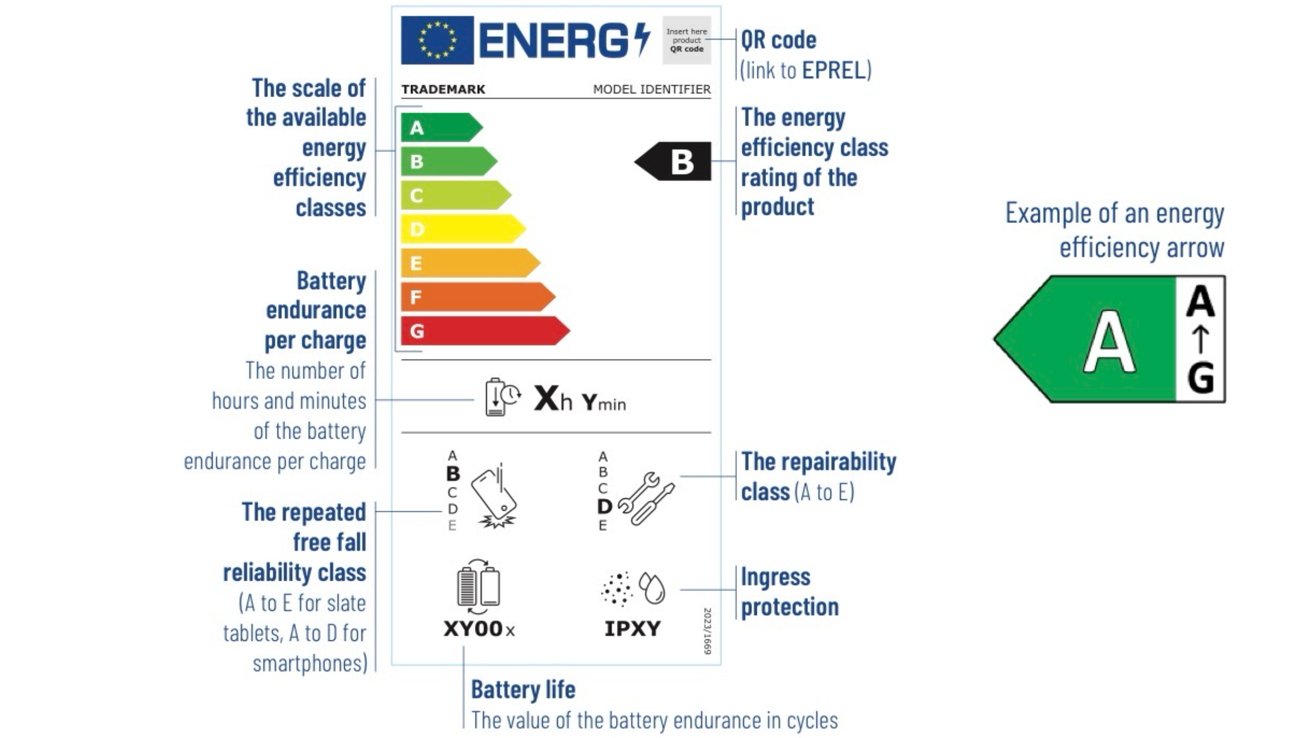GCP Fundamentals: Cloud Channel API
Streamlining Cloud Resource Management with Google Cloud Channel API The modern cloud landscape is characterized by rapid innovation, increasing complexity, and a growing demand for efficient resource management. Organizations are increasingly adopting multicloud strategies, prioritizing sustainability, and leveraging AI-driven infrastructure. This creates a significant challenge: how to consistently and reliably provision, manage, and govern cloud resources across diverse environments. Companies like Snowflake and Databricks, both heavily reliant on scalable cloud infrastructure, are leveraging programmatic resource management to optimize costs and accelerate innovation. The Google Cloud Channel API provides a powerful solution to these challenges, enabling programmatic control over GCP resource access and lifecycle. What is Cloud Channel API? The Google Cloud Channel API is a RESTful API that allows partners to sell Google Cloud products and services to customers programmatically. While initially designed for the Google Cloud Partner Network, its capabilities extend beyond traditional reseller scenarios, offering a robust framework for automating GCP resource provisioning and management. It provides a unified interface for managing customer accounts, subscriptions, and entitlements. At its core, the Cloud Channel API simplifies the complexities of GCP’s billing and access control systems. It abstracts away the need to directly interact with individual GCP services for provisioning, allowing for centralized control and automation. The API is currently available in v1, with ongoing updates and feature additions. It’s a foundational component of the GCP ecosystem, tightly integrated with Cloud Billing, IAM, and Resource Manager. It doesn’t directly create resources like Compute Engine instances; instead, it manages the access to those resources for customers, and the billing associated with them. Why Use Cloud Channel API? Traditional methods of managing GCP resources – manual console interactions or complex scripting – are often slow, error-prone, and difficult to scale. The Cloud Channel API addresses these pain points by providing a programmatic, automated, and secure way to manage GCP access. Key benefits include: Automation: Automate the entire customer lifecycle, from onboarding to provisioning to ongoing management. Scalability: Easily scale resource management operations to support a growing customer base. Reduced Errors: Minimize manual errors through automated processes and standardized configurations. Centralized Control: Gain a single pane of glass for managing customer access and billing. Faster Time to Market: Accelerate the delivery of cloud services to customers. Use Cases: Managed Service Providers (MSPs): An MSP can use the API to automatically provision and manage GCP resources for multiple clients, streamlining operations and reducing costs. For example, automatically creating a new project for each client with pre-defined IAM roles and billing configurations. Software Vendors (ISVs): An ISV can embed GCP resource provisioning into their application, allowing customers to easily deploy and scale their software on GCP. Imagine a data analytics platform that automatically provisions BigQuery datasets and Compute Engine instances based on user demand. Internal IT Departments: Large enterprises can use the API to automate the provisioning of GCP resources for different teams and projects, enforcing consistent policies and improving resource utilization. A company could automatically create development, staging, and production environments for each new application. Key Features and Capabilities Customer Account Management: Create, update, and delete customer accounts programmatically. How it works: Uses the customers resource to manage customer information. Example: gcloud alpha channel customers create --name="My Customer" --billing-account=012345-6789AB-CDEF01 Integration: Cloud Billing Subscription Management: Create, modify, and cancel subscriptions to GCP products and services. How it works: Leverages the subscriptions resource to define service entitlements. Example: Creating a Compute Engine subscription: gcloud alpha channel subscriptions create --customer=customers/12345 --plan=compute-standard Integration: Cloud Billing, Compute Engine Entitlement Management: Manage customer entitlements to specific GCP products and features. How it works: Uses the entitlements resource to grant or revoke access. Example: Granting access to Cloud Storage: gcloud alpha channel entitlements create --subscription=subscriptions/67890 --service=storage Integration: IAM, Cloud Storage Billing Account Linking: Associate customer accounts with billing accounts for accurate billing. How it works: Establishes a financial relationship between the customer and the billing account. Example: Linking a cust

Streamlining Cloud Resource Management with Google Cloud Channel API
The modern cloud landscape is characterized by rapid innovation, increasing complexity, and a growing demand for efficient resource management. Organizations are increasingly adopting multicloud strategies, prioritizing sustainability, and leveraging AI-driven infrastructure. This creates a significant challenge: how to consistently and reliably provision, manage, and govern cloud resources across diverse environments. Companies like Snowflake and Databricks, both heavily reliant on scalable cloud infrastructure, are leveraging programmatic resource management to optimize costs and accelerate innovation. The Google Cloud Channel API provides a powerful solution to these challenges, enabling programmatic control over GCP resource access and lifecycle.
What is Cloud Channel API?
The Google Cloud Channel API is a RESTful API that allows partners to sell Google Cloud products and services to customers programmatically. While initially designed for the Google Cloud Partner Network, its capabilities extend beyond traditional reseller scenarios, offering a robust framework for automating GCP resource provisioning and management. It provides a unified interface for managing customer accounts, subscriptions, and entitlements.
At its core, the Cloud Channel API simplifies the complexities of GCP’s billing and access control systems. It abstracts away the need to directly interact with individual GCP services for provisioning, allowing for centralized control and automation.
The API is currently available in v1, with ongoing updates and feature additions. It’s a foundational component of the GCP ecosystem, tightly integrated with Cloud Billing, IAM, and Resource Manager. It doesn’t directly create resources like Compute Engine instances; instead, it manages the access to those resources for customers, and the billing associated with them.
Why Use Cloud Channel API?
Traditional methods of managing GCP resources – manual console interactions or complex scripting – are often slow, error-prone, and difficult to scale. The Cloud Channel API addresses these pain points by providing a programmatic, automated, and secure way to manage GCP access.
Key benefits include:
- Automation: Automate the entire customer lifecycle, from onboarding to provisioning to ongoing management.
- Scalability: Easily scale resource management operations to support a growing customer base.
- Reduced Errors: Minimize manual errors through automated processes and standardized configurations.
- Centralized Control: Gain a single pane of glass for managing customer access and billing.
- Faster Time to Market: Accelerate the delivery of cloud services to customers.
Use Cases:
- Managed Service Providers (MSPs): An MSP can use the API to automatically provision and manage GCP resources for multiple clients, streamlining operations and reducing costs. For example, automatically creating a new project for each client with pre-defined IAM roles and billing configurations.
- Software Vendors (ISVs): An ISV can embed GCP resource provisioning into their application, allowing customers to easily deploy and scale their software on GCP. Imagine a data analytics platform that automatically provisions BigQuery datasets and Compute Engine instances based on user demand.
- Internal IT Departments: Large enterprises can use the API to automate the provisioning of GCP resources for different teams and projects, enforcing consistent policies and improving resource utilization. A company could automatically create development, staging, and production environments for each new application.
Key Features and Capabilities
-
Customer Account Management: Create, update, and delete customer accounts programmatically.
-
How it works: Uses the
customersresource to manage customer information. -
Example:
gcloud alpha channel customers create --name="My Customer" --billing-account=012345-6789AB-CDEF01 - Integration: Cloud Billing
-
How it works: Uses the
-
Subscription Management: Create, modify, and cancel subscriptions to GCP products and services.
-
How it works: Leverages the
subscriptionsresource to define service entitlements. -
Example: Creating a Compute Engine subscription:
gcloud alpha channel subscriptions create --customer=customers/12345 --plan=compute-standard - Integration: Cloud Billing, Compute Engine
-
How it works: Leverages the
-
Entitlement Management: Manage customer entitlements to specific GCP products and features.
-
How it works: Uses the
entitlementsresource to grant or revoke access. -
Example: Granting access to Cloud Storage:
gcloud alpha channel entitlements create --subscription=subscriptions/67890 --service=storage - Integration: IAM, Cloud Storage
-
How it works: Uses the
-
Billing Account Linking: Associate customer accounts with billing accounts for accurate billing.
- How it works: Establishes a financial relationship between the customer and the billing account.
- Example: Linking a customer to a billing account during customer creation (see example in #1).
- Integration: Cloud Billing
-
Role-Based Access Control (RBAC): Control access to the API based on user roles and permissions.
- How it works: Utilizes IAM roles to define granular access control.
-
Example: Granting the
roles/channelpartner.adminrole to a user. - Integration: IAM
-
API Keys: Generate and manage API keys for secure access to the API.
- How it works: Provides a secure authentication mechanism.
- Example: Creating an API key through the Google Cloud Console.
- Integration: IAM
-
Audit Logging: Track all API calls for auditing and compliance purposes.
- How it works: Logs all API activity to Cloud Logging.
- Example: Analyzing Cloud Logging data to identify unauthorized access attempts.
- Integration: Cloud Logging
-
Service Account Support: Use service accounts for automated access to the API.
- How it works: Allows applications to authenticate without user intervention.
- Example: Using a service account to automatically provision resources.
- Integration: IAM
-
Error Handling: Robust error handling and reporting mechanisms.
- How it works: Provides detailed error messages to help troubleshoot issues.
-
Example: Handling
PERMISSION_DENIEDerrors by verifying IAM permissions.
-
Rate Limiting: Protects the API from abuse and ensures fair usage.
- How it works: Limits the number of requests that can be made within a given time period.
- Example: Implementing retry logic to handle rate limiting errors.
Detailed Practical Use Cases
-
Automated Project Creation for New Clients (MSP):
- Workflow: When a new client signs up, the MSP’s system calls the Cloud Channel API to create a new GCP project for the client, pre-configured with necessary services (e.g., Compute Engine, Cloud Storage) and IAM roles.
- Role: DevOps Engineer
- Benefit: Reduces onboarding time and ensures consistent project configurations.
- Code (Python):
from google.cloud import channel_v1 def create_customer_project(customer_name, billing_account): client = channel_v1.ChannelServiceClient() parent = "providers/YOUR_PROVIDER_ID" customer = channel_v1.Customer() customer.name = customer_name customer.billing_account = billing_account request = channel_v1.CreateCustomerRequest(parent=parent, customer=customer) response = client.create_customer(request=request) print(f"Created customer: {response.name}") -
Dynamic Resource Provisioning for Machine Learning Training (Data Science):
- Workflow: A data scientist initiates a machine learning training job. The system calls the Cloud Channel API to dynamically provision Compute Engine instances with the required specifications (e.g., GPU, memory) and automatically de-provision them after the training is complete.
- Role: Data Scientist/ML Engineer
- Benefit: Optimizes resource utilization and reduces costs.
- Code (Terraform):
resource "google_project_iam_member" "project_owner" { project = "your-project-id" role = "roles/owner" member = "user:your-email@example.com" } -
Automated Subscription Management for SaaS Applications (ISV):
- Workflow: When a customer subscribes to a SaaS application, the ISV’s system calls the Cloud Channel API to automatically provision the necessary GCP resources (e.g., Cloud SQL, Cloud Functions) and manage the customer’s subscription.
- Role: Software Engineer
- Benefit: Simplifies subscription management and ensures consistent service delivery.
-
Compliance-Driven Resource Isolation (Security Engineer):
- Workflow: Automatically create isolated GCP projects for customers with specific compliance requirements (e.g., HIPAA, PCI DSS), enforcing strict IAM policies and data encryption settings.
- Role: Security Engineer
- Benefit: Ensures compliance and protects sensitive data.
-
Automated Disaster Recovery Setup (SRE):
- Workflow: Automatically provision and configure a disaster recovery environment in a separate GCP region using the Cloud Channel API, ensuring business continuity in the event of an outage.
- Role: Site Reliability Engineer
- Benefit: Improves resilience and reduces downtime.
-
IoT Device Management with Scalable Resource Allocation (IoT Engineer):
- Workflow: As new IoT devices connect to a platform, automatically provision resources (e.g., Cloud IoT Core, Pub/Sub topics) using the Cloud Channel API to handle the increased data volume and processing requirements.
- Role: IoT Engineer
- Benefit: Enables scalable and efficient IoT device management.
Architecture and Ecosystem Integration
graph LR
A[External System (MSP/ISV)] --> B(Cloud Channel API);
B --> C{IAM};
B --> D{Cloud Billing};
B --> E{Resource Manager};
C --> F[GCP Resources (Compute Engine, Cloud Storage, etc.)];
D --> F;
E --> F;
B --> G[Cloud Logging];
subgraph GCP Ecosystem
C
D
E
F
G
end
style A fill:#f9f,stroke:#333,stroke-width:2px
style B fill:#ccf,stroke:#333,stroke-width:2px
This diagram illustrates how the Cloud Channel API acts as a central control point for managing GCP resources. External systems (like MSPs or ISVs) interact with the API to provision and manage resources, which are then governed by IAM, Cloud Billing, and Resource Manager. Cloud Logging provides audit trails for all API calls.
CLI and Terraform References:
-
gcloud alpha channel: The primarygcloudcommand group for interacting with the Cloud Channel API. -
Terraform Provider: While a dedicated Cloud Channel API provider isn't currently available, you can use the standard
googleprovider to manage IAM roles and billing accounts, which are essential components of the Cloud Channel API workflow.
Hands-On: Step-by-Step Tutorial
This tutorial demonstrates how to create a customer account using the gcloud CLI.
- Enable the Cloud Channel API:
gcloud services enable channel.googleapis.com
- Set your project:
gcloud config set project YOUR_PROJECT_ID
- Create a customer account:
gcloud alpha channel customers create --name="My Test Customer" --billing-account=012345-6789AB-CDEF01 --provider-id=YOUR_PROVIDER_ID
Replace YOUR_PROJECT_ID, 012345-6789AB-CDEF01, and YOUR_PROVIDER_ID with your actual values.
- Verify the customer account:
gcloud alpha channel customers list
Troubleshooting:
-
PERMISSION_DENIED: Ensure your service account or user has the necessary IAM permissions (e.g.,roles/channelpartner.admin). -
INVALID_ARGUMENT: Verify that all required parameters are provided and are in the correct format.
Pricing Deep Dive
The Cloud Channel API itself does not have direct usage-based pricing. You are billed for the GCP resources provisioned through the API, based on the standard pricing models for those services (e.g., Compute Engine, Cloud Storage).
There are no upfront costs or subscription fees for using the API. However, there are quotas and limits to prevent abuse. These quotas can be increased by contacting Google Cloud Support.
Cost Optimization:
- Right-sizing resources: Provision only the resources that are needed.
- Using committed use discounts: Commit to using GCP resources for a specific period of time to receive significant discounts.
- Leveraging preemptible VMs: Use preemptible VMs for non-critical workloads to reduce costs.
Security, Compliance, and Governance
-
IAM Roles: The
roles/channelpartner.adminrole provides full access to the Cloud Channel API. More granular roles can be created to restrict access to specific functionalities. - Service Accounts: Use service accounts for automated access to the API, following the principle of least privilege.
- Compliance: GCP is compliant with a wide range of industry standards, including ISO 27001, SOC 2, FedRAMP, and HIPAA.
- Org Policies: Use organization policies to enforce consistent security and governance policies across your GCP environment.
- Audit Logging: Enable audit logging to track all API calls and identify potential security threats.
Integration with Other GCP Services
- BigQuery: Analyze Cloud Channel API audit logs in BigQuery to gain insights into resource usage and identify potential cost savings.
- Cloud Run: Deploy serverless applications that automate resource provisioning and management using the Cloud Channel API.
- Pub/Sub: Use Pub/Sub to receive real-time notifications about changes to customer accounts and subscriptions.
- Cloud Functions: Trigger Cloud Functions based on events from the Cloud Channel API to automate tasks such as resource provisioning and de-provisioning.
- Artifact Registry: Store and manage Terraform configurations and other infrastructure-as-code artifacts used to provision GCP resources.
Comparison with Other Services
| Feature | Cloud Channel API | AWS Marketplace | Azure Marketplace |
|---|---|---|---|
| Primary Focus | Programmatic partner sales & resource access management | Software distribution & billing | Software distribution & billing |
| Automation Capabilities | High | Moderate | Moderate |
| Granular Access Control | High (IAM integration) | Limited | Limited |
| Billing Flexibility | High | Moderate | Moderate |
| Ecosystem Integration | Tight with GCP | Good with AWS | Good with Azure |
| Complexity | Moderate | Moderate | Moderate |
When to Use Which:
- Cloud Channel API: Ideal for MSPs, ISVs, and large enterprises that require programmatic control over GCP resource access and billing.
- AWS Marketplace/Azure Marketplace: Suitable for distributing and selling software applications on AWS and Azure, respectively.
Common Mistakes and Misconceptions
- Confusing the API with Resource Creation: The Cloud Channel API manages access to resources, not the resources themselves.
- Insufficient IAM Permissions: Failing to grant the necessary IAM permissions to service accounts or users.
- Incorrect Billing Account Linking: Linking a customer account to the wrong billing account.
- Ignoring Rate Limits: Exceeding the API’s rate limits and causing errors.
- Lack of Audit Logging: Not enabling audit logging to track API calls and identify potential security threats.
Pros and Cons Summary
Pros:
- Highly automated and scalable.
- Granular access control.
- Tight integration with GCP ecosystem.
- Enables programmatic resource management.
- Cost optimization opportunities.
Cons:
- Moderate complexity.
- Requires a good understanding of GCP IAM and billing.
- Limited direct support for infrastructure-as-code tools (Terraform).
Best Practices for Production Use
- Monitoring: Monitor API usage and error rates using Cloud Monitoring.
- Scaling: Design your applications to handle increased API traffic.
- Automation: Automate resource provisioning and management using infrastructure-as-code tools.
- Security: Implement strong security measures, including IAM roles, service accounts, and audit logging.
- Alerting: Set up alerts to notify you of potential issues, such as rate limit errors or unauthorized access attempts.
-
gcloudTip: Use the--quietflag to suppress verbose output fromgcloudcommands.
Conclusion
The Google Cloud Channel API is a powerful tool for streamlining cloud resource management, automating customer onboarding, and optimizing costs. By providing a programmatic interface for managing GCP access and billing, it empowers organizations to accelerate innovation and deliver cloud services more efficiently. Explore the official documentation and try the hands-on lab to unlock the full potential of this valuable service: https://cloud.google.com/channel/docs












































































































































































![[The AI Show Episode 154]: AI Answers: The Future of AI Agents at Work, Building an AI Roadmap, Choosing the Right Tools, & Responsible AI Use](https://www.marketingaiinstitute.com/hubfs/ep%20154%20cover.png)
![[The AI Show Episode 153]: OpenAI Releases o3-Pro, Disney Sues Midjourney, Altman: “Gentle Singularity” Is Here, AI and Jobs & News Sites Getting Crushed by AI Search](https://www.marketingaiinstitute.com/hubfs/ep%20153%20cover.png)

































































































































































































![GrandChase tier list of the best characters available [June 2025]](https://media.pocketgamer.com/artwork/na-33057-1637756796/grandchase-ios-android-3rd-anniversary.jpg?#)














































.png?width=1920&height=1920&fit=bounds&quality=70&format=jpg&auto=webp#)





















_Frank_Peters_Alamy.jpg?width=1280&auto=webp&quality=80&disable=upscale#)



































































































![Samsung’s Galaxy Z Fold 7 looks positively svelte in dummy hands-on [Video]](https://i0.wp.com/9to5google.com/wp-content/uploads/sites/4/2025/06/Worlds-First-Look-Hands-On-with-the-Galaxy-Z-Fold-7-dummy-1-1-screenshot.png?resize=1200%2C628&quality=82&strip=all&ssl=1)












![Apple Weighs Acquisition of AI Startup Perplexity in Internal Talks [Report]](https://www.iclarified.com/images/news/97674/97674/97674-640.jpg)
![Oakley and Meta Launch Smart Glasses for Athletes With AI, 3K Camera, More [Video]](https://www.iclarified.com/images/news/97665/97665/97665-640.jpg)

![How to Get Your Parents to Buy You a Mac, According to Apple [Video]](https://www.iclarified.com/images/news/97671/97671/97671-640.jpg)




















![New accessibility settings announced for Steam Big Picture Mode and SteamOS [Beta]](https://www.ghacks.net/wp-content/uploads/2025/06/New-accessibility-settings-announced-for-Steam-Big-Picture-Mode-and-SteamOS.jpg)













































